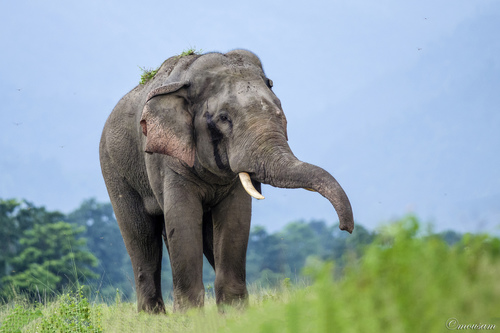
Asian Elephant
The majestic Asian elephant, Elephas maximus, roams the lush landscapes of Asia, known for its keen intelligence and intricate social structures. Its dexterous trunk and immense strength make it a keystone species, vital for forest health and biodiversity.
55-70 years
Lifespan
3000.0 - 5000.0 kg
Weight
Height: 45325.0 m
Size
Brown, Grey, Black
Color
27 mph
Top Speed
Endangered
Conservation Status
Decreasing
Population Trend
Characteristics
Elephas maximus, commonly known as the Asian elephant, is found in diverse habitats like grasslands and forests across South and Southeast Asia. Noted for its intelligence and strong social bonds, this species has a trunk with finger-like projections, aiding in grasping and communication. It plays a crucial role in maintaining forest ecosystems.
Distribution Range of the Asian Elephant
The Asian elephant (Elephas maximus) is native to South and Southeast Asia. Its geographical distribution spans across several countries including India, Nepal, Bhutan, Bangladesh, Sri Lanka, Myanmar, Thailand, Laos, Cambodia, Vietnam, Malaysia, and Indonesia (Sumatra and Borneo).
Asian Elephant's Habitat
Environmental Conditions
Asian elephants inhabit a variety of environments, including grasslands, forests, and scrublands. They are typically found in regions with ample water resources as they require large quantities of water daily. The climate in these areas ranges from tropical and subtropical to temperate zones, depending on the specific region.
Ecological Niche
Elephas maximus occupies the role of a mega-herbivore within its ecosystem. It plays a crucial role in maintaining the ecological balance by influencing the structure of vegetation through feeding habits, which include grazing on grasses and browsing on trees and shrubs. They also contribute to seed dispersal, facilitating plant regeneration and biodiversity.
Copyright @ Nature Style Limited. All Rights Reserved.
 English
English